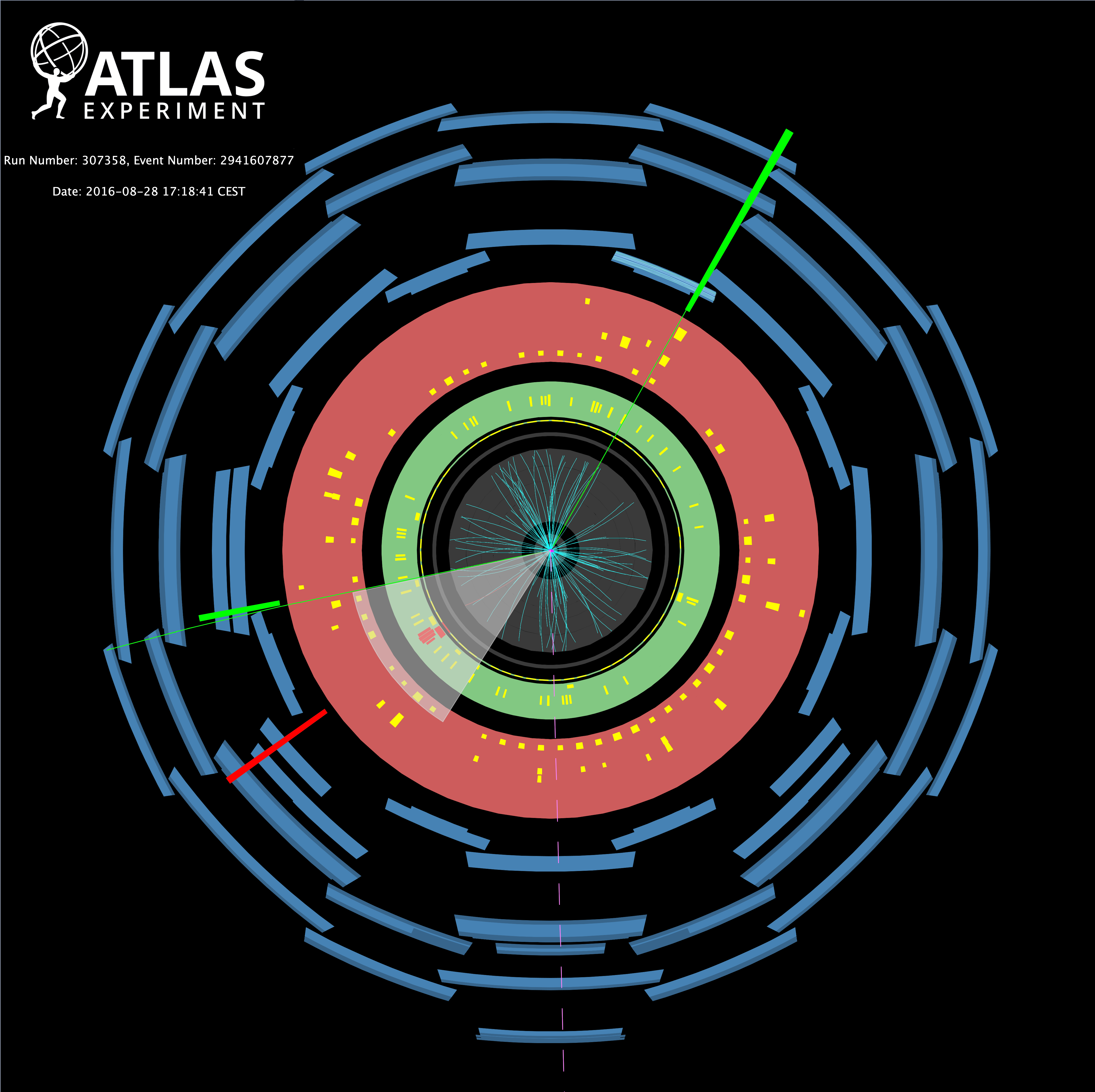ATLAS and CMS unite to weigh in on the top quark
2 October 2023 | By
The ATLAS and CMS Experiments at CERN have just released a new measurement of the mass of the top quark. The new result combines 15 previous measurements to give the most precise determination of the top-quark mass to date.
Among the known fundamental particles of the universe, the top quark claims the heavyweight title, with a mass 184 times that of the proton. Measuring its precise value – along with that of the Higgs boson – provides crucial information about the theoretical underpinnings of the Standard Model. It also allows researchers to improve the precision of theoretical calculations, better enabling them to unveil new physics processes.
For the first time, the ATLAS and CMS Collaborations have joined forces to measure the mass of this fundamental particle. Their new result, presented at the Top 2023 International Workshop, makes a weighted average of 15 separate measurements made with LHC Run-1 datasets collected in 2011 and 2012.
The new combined result is the most precise determination of the top-quark mass to date.
Though ATLAS and CMS have independent data samples, their measurements do have some shared sources of systematic uncertainty. These can include: shared theoretical modelling of top-quark and background processes; the presence of multiple, simultaneous collisions (“pile-up”) affecting measurements in both experiments in similar ways; and a common understanding of the internal structure of the colliding protons. When combining their measurements, researchers have to be careful not to double count any of these shared uncertainties.
For example, the top-quark almost always decays to a W boson and a bottom quark. In these decays, the bottom quark produces a unique “jet” of particles, called a “b-jet”. Determining the energy scale of these b-jets relies on simulations of jet formation that are common to both experiments. This leads to shared systematic uncertainties in the top-quark mass measurements of ATLAS and CMS that have to be accounted for.
After a detailed study of the cross-experiment correlations, the 15 ATLAS and CMS results were combined to give a precise new determination of the top-quark mass: 172.52 ± 0.33 GeV (see Figure 1). Researchers also examined the ATLAS- and CMS-only combinations of the top-quark mass and found them consistent with the joint-experiment combination – giving further confidence in the new result (see Figure 2).
The new result is a good example of the meticulous work required to understand LHC data, which can go on for many years after the data is collected. Looking forward, Run 2 and Run 3 provide unprecedented samples of top-quarks that already allow ATLAS and CMS researchers to further investigate this fascinating particle
Learn more
- Combination of measurements of the top quark mass from data collected by the ATLAS and CMS experiments at 7 and 8 TeV (ATLAS-CONF-2023-066, CMS PAS TOP-22-001)
- Measurement of the top quark mass in the tt¯→ lepton+jets channel from 8 TeV ATLAS data and combination with previous results (arXiv:1810.01772)
- CMS Collaboration: Measurement of the top quark mass using proton-proton data at 7 and 8 TeV (arXiv:1509.04044)






